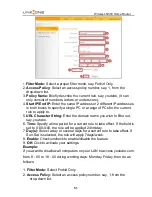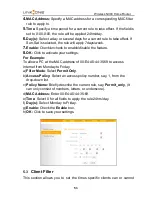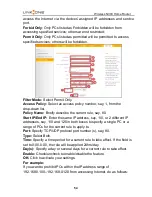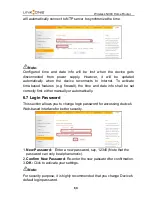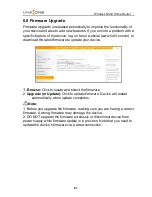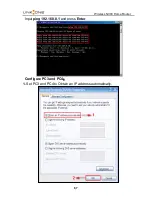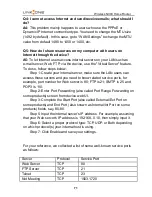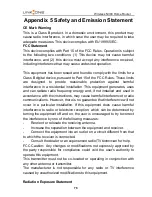
Wireless N300 Home Router
.
63
protocols. It provides an authentication mechanism to devices wishing to
attach to a LAN or WLAN.IEEE 802.1X defines the encapsulation of EAP
over LAN or EAPOL. 802.1X authentication involves three parties: a
supplicant, an authenticator, and an authentication server. The supplicant
is a client device (such as a laptop) that wishes to attach to the
LAN/WLAN - though the term 'supplicant' is also used interchangeably to
refer to the software running on the client that provides credentials to the
authenticator. The authenticator is a network device, such as an Ethernet
switch or wireless access point; and the authentication server is typically
a host running software supporting the RADIUS and EAP protocols. The
authenticator acts like a security guard to a protected network. The
supplicant (i.e. client device) is not allowed access through the
authe
nticator to the protected side of the network until the supplicant’s
identity has been validated and authorized. With 802.1X port-based
authentication, the supplicant provides credentials, such as user name /
password or digital certificate, to the authenticator, and the authenticator
forwards the credentials to the authentication server for verification. If the
authentication server determines the credentials are valid, the supplicant
(client device) is allowed to access resources located on the protected
side of the network.
PPPOE
The Point-to-Point Protocol over Ethernet (PPPoE) is a network protocol
for encapsulating PPP frames inside Ethernet frames. Integrated PPP
protocol implements authentication, encryption, and compression
functions that traditional Ethernet cannot provide and can also be used in
the cable modem and digital subscriber line (DSL) and Ethernet that
provide access service to the users. Essentially, it is a protocol that allows
establishing a point-to-point tunnel between two Ethernet interfaces within
an Ethernet broadcast domain.
DNS
The Domain Name System (DNS) is a hierarchical distributed naming
system for computers, services, or any resource connected to the Internet
or a private network. It associates various information with domain names
assigned to each of the participating entities. A Domain Name Service



